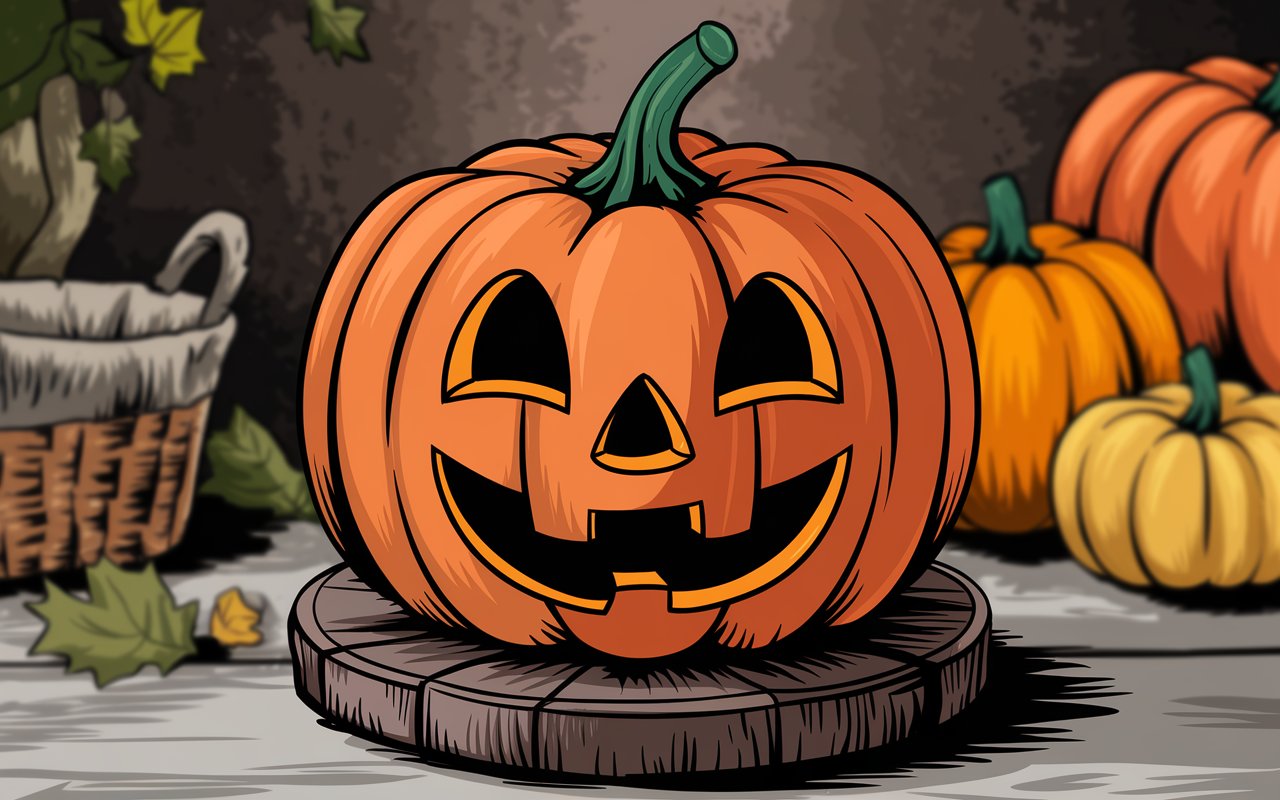Drawing a pumpkin can be a fun and rewarding way to express your creativity, especially with a guide that’s easy to follow. Whether you’re aiming for a traditional Halloween-style pumpkin, a realistic pumpkin with textures, or a unique, stylized version, this comprehensive article will take you from the basics of drawing a pumpkin to advanced techniques. Let’s explore how to create captivating pumpkin drawings with the exact keyword, “drawing:6ya5lsy38aw= pumpkin.”
The Basics of Drawing:6ya5lsy38aw= Pumpkin
Starting with a simple pumpkin sketch is the best approach for beginners. In this initial stage, you’ll learn how to establish the basic structure, ensuring that your pumpkin has the proper proportions and foundation.
1. Start with Basic Shapes
The core of any pumpkin drawing begins with a circle or an oval shape. For “drawing:6ya5lsy38aw= pumpkin,” begin by sketching a large, rounded oval in the middle of your page. You can use a pencil for light lines to ensure flexibility in adjusting your design.
2. Outline the Sections of the Pumpkin
Pumpkins are divided into sections or ribs, which give them their iconic shape. Lightly draw curved lines from the top to the bottom, following the natural curve of your oval. These sections will make your pumpkin look dimensional.
3. Add the Stem
The stem is often overlooked but can give your drawing personality. Sketch a small oval or rectangular shape at the top of your pumpkin. Remember, stems are rarely perfectly straight, so feel free to add some bends and curves.
4. Adjust Proportions and Shapes
Before moving into detail, take a moment to refine the shape. Are the ribs even? Is the stem well-positioned? Making these adjustments now will save time later.
Adding Texture and Depth to Drawing:6ya5lsy38aw= Pumpkin
Adding texture to your drawing is essential for a realistic look. This involves shading and adding fine lines to capture the natural appearance of a pumpkin.
- Shading the Ribs
Use gentle shading along the sides of each rib, with darker shading along the edges where the sections meet. This contrast will create a more three-dimensional appearance. - Creating Texture on the Pumpkin Surface
To make your pumpkin look realistic, add small details like bumps or irregularities. Pumpkins naturally have some roughness, so include small, wavy lines and dots. These lines should follow the curve of each rib, enhancing the pumpkin’s roundness. - Detailing the Stem
Stems often have a wood-like texture. Shade it in layers, adding vertical lines and subtle curves. You can also include small imperfections, like tiny grooves or cracks, which make it look authentic.
Enhancing Drawing:6ya5lsy38aw= Pumpkin with Advanced Techniques
Once you’ve established the basic shape, depth, and texture, advanced artists might want to experiment with shading techniques or even colored pencils or pastels for a vibrant look.
1. Cross-Hatching and Stippling
Cross-hatching involves drawing intersecting lines to create a shadow. This technique is perfect for pumpkins, as it adds richness without overwhelming the shape. Stippling, or dotting, is another way to build shadow while creating texture.
2. Experimenting with Colors
If you’re using colored pencils, start with a base layer in a medium orange. Gradually layer darker shades in areas that need depth and use yellow for highlights. You can even incorporate browns and greens into the stem for an earthy effect.
3. Using Different Mediums
Charcoal and pastels are ideal for those who enjoy dramatic shading. Charcoal provides strong shadows, while pastels can add color depth. Blend colors to create a soft, realistic look.
Common Mistakes to Avoid When Drawing:6ya5lsy38aw= Pumpkin
Avoiding these mistakes can help you achieve a professional look, even as a beginner.
- Over-shading: Too much shading can make your drawing look heavy and unrealistic.
- Symmetry Issues: Pumpkins are naturally irregular, so avoid making your sections too perfect.
- Overworking the Details: Keep details subtle, especially on the pumpkin surface. Too many small lines or dots can make the drawing look cluttered.
Seasonal Variations – From Spooky to Autumn Harvest
Pumpkins are iconic for Halloween but also perfect for autumn decor. Explore these styles to add seasonal flair to your drawing.
- Jack-O’-Lantern Style
To make a jack-o’-lantern, draw triangular eyes and a jagged mouth on your pumpkin. Add shadows around these features for depth. You can even shade the inside to make it look hollow. - Autumn Harvest Style
For a classic harvest pumpkin, focus on natural colors and textures. You can add leaves or even a shadow beneath the pumpkin to suggest it’s resting on a surface. - Pumpkin Patch Scene
Create an entire pumpkin patch by drawing multiple pumpkins of different sizes. Vary the shading and perspective for a lively scene.
FAQs
1. What’s the best way to start drawing a pumpkin?
Start by sketching an oval shape and add curved lines for the pumpkin’s sections.
2. How do I make my pumpkin drawing look realistic?
Use shading along the edges of each rib, add texture with fine lines, and don’t make the shape too symmetrical.
3. What tools can I use for shading?
Pencils, charcoal, or colored pencils are great for shading. Blending tools, like a smudge stick or tissue, also work well.
4. Can I draw a pumpkin in color?
Yes! Use colored pencils, pastels, or markers for vibrant orange hues and layer darker colors for depth.
5. How do I add detail to the pumpkin’s surface?
Add small, uneven lines and dots to mimic the rough texture of a pumpkin’s skin.
6. What’s the best way to draw a stem?
Draw a small, curved shape at the top and add texture with vertical lines and shading for a wood-like effect.
7. How can I draw a jack-o’-lantern?
Sketch eyes and a mouth with jagged edges, then shade around these features for depth.
8. How do I draw multiple pumpkins in one scene?
Draw pumpkins of different sizes and positions, adding shadows to give the impression of a group.
9. What are some good shading techniques for pumpkins?
Try cross-hatching and stippling to add texture. These techniques create a natural look.
10. How can I make my pumpkin look more realistic?
Focus on shading each section individually, creating gradual transitions between light and shadow.
Conclusion
Mastering the art of “drawing:6ya5lsy38aw= pumpkin” opens up countless creative possibilities, from simple sketches to detailed, realistic designs. By following the steps outlined here—from sketching basic shapes to adding rich textures and shading—you can create pumpkins that capture the charm and depth of real-life forms. Whether you’re aiming for a spooky Halloween jack-o’-lantern or a classic autumn harvest pumpkin, you now have the skills and techniques to bring your vision to life.Remember, practice is key. Each pumpkin you draw will improve your understanding of shape, depth, and texture. As you refine these techniques, feel free to experiment with colors, different tools, and settings to make your drawings unique. Drawing is as much about expressing your style as it is about technique, so let your creativity flow. Enjoy the process, and have fun crafting beautiful pumpkin art!



